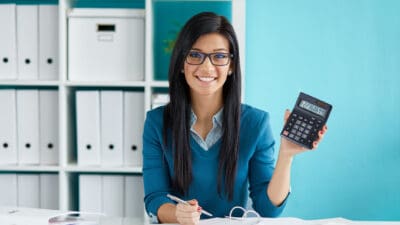Owning ASX shares can be very rewarding, giving investors the potential to earn both dividends and capital gains.
Over time, we'd all like to see our investments deliver returns that match or, if possible, beat the market. And on the face of it, a dollar is a dollar whether it's generated through dividends or capital growth.
However, we should also remember that taxation can affect the ultimate net returns for our portfolio. The Australian taxation system is quite generous for investors, in my opinion, and we can use that to our advantage.
Let's explore the benefits of both dividends and capital gains in Australia.
Fully franked dividends
When companies make a profit, they have to decide what to do with it. I hope a significant portion of it is reinvested into more growth opportunities.
ASX shares can also decide to pay out a portion of earnings as a dividend.
Australian companies create franking credits when they pay income tax to the Australian government.
Franking credits are refundable tax credits when Australians do their tax return, so they do have a value. But, they also add to an investor's taxable income. So, franking credits may be most useful to someone in a low (or no) tax bracket because those franking credits can be refunded. Franking credits also reduce the tax burden of someone in the highest tax brackets.
As an example, if you received $70 of fully franked dividends, the grossed-up dividend income would be $100 — including $30 added franking credits. The benefit of those $30 franking credits won't be realised until completing the tax return.
Capital gains discount
When a share price lifts above the cost base (the price we paid for it), we say that we've made a capital gain. But, capital gains are only taxed when that ASX share has been sold. That's called a capital gains tax event.
In Australia, if an investor sells an ASX share for a gain (proceeds minus the cost base) and holds it for less than 12 months, the net gain (for example, $1,000) is added to their taxable income.
However, if an individual held onto the ASX share for at least 12 months before selling it, then they can utilise the capital gains tax discount which halves the capital gain. A net gain of $1,000 can be reduced to $500.
My preferred option
I love receiving dividends from ASX shares because of the useful cash flow they provide.
However, capital growth can be the most effective strategy because gains aren't taxed until sold. If we invest with a long-term focus and don't sell, then there may be no capital-gains-related tax headwinds during our ownership over multiple years.
Many leading ASX shares provide a mixture of growth and dividends. I like names such as Washington H. Soul Pattinson and Co. Ltd (ASX: SOL) and Wesfarmers Ltd (ASX: WES) for a mixture of dividends and (profit) growth.
When it comes to exchange-traded funds (ETFs), I'd rather invest in international growth-focused ETFs with strong overall returns than ASX-based ETFs that are weighted to companies with a slower earnings growth rate and typically offer a higher level of dividend income.








